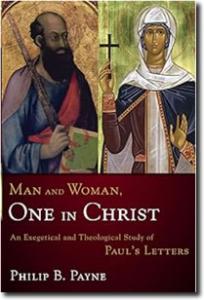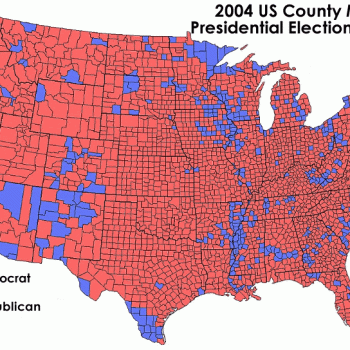The Role of Women in the Early Church – Part 4

In the last section we saw the evidence of women in the orbit of the Apostle Paul. The evidence in the book of Acts and from the letters of Paul indicate that women were not only accepted into Paul’s orbit – they are celebrated and served as leaders.
for you are all one in Christ Jesus. Galatians 3:28
Two Thorny Passages
In the face of such evidence there are two passages in Pauline writings that must be addressed: 1 Corinthians 14:34-35 and 1 Timothy 2:11-12. [-1-]

Both of these verses command women to remain silent or quiet [in church]. “In church” is clearly stated in the 1 Corinthians text, but is only implied in 1 Timothy:
The focus in this section is the manuscript [MSS] tradition of the 1 Corinthians text. That evidence informs us on the second text.

MSS Evidence of an Addition to the Text
Philip Payne offers an extensive review of the MSS evidence in “Man and Woman” [pp.225-253] for anyone who wants to go deeper into the data. Payne seems to use Gordon Fee’s presentation as a springboard. I will use Payne’s overview (which has extensive footnotes) with a simple listing of the major points. [-2-]
– A number of scholars agree that 1 Cor 14:34-35 is an interpolation, meaning it was not in the original letter written by Paul, but was added later by scribal copyists. (p.227)
– The “Western” MS tradition is known to be some of the earliest copies of the New Testament. Every “Western” manuscript has v34-35 AFTER v40. This alone is an indication of a manuscript issue. (p.228)
– A significant list of second and third century church fathers cite several verses from 1 Cor 14 without any acknowledgement of v34-35 is an indication that these verses were added into the Western MS tradition sometime in the second century. (p.250-252) [-3-]
– There is a correction of Codex Fuldensis in 547AD, placing v34-35 in the margin with markings showing the reader/scribe where the verses had been prior to editing. This marginal marking makes it clear that Bishop Victor had good evidence that the verses had been added. (pp.246-250)
For me the evidence in the Codex Vaticanus, coupled with the meta-message of Paul (Galatians 3:28), is the best evidence of interpolation. Vaticanus is an uncial MS in the Alexandrian text-type dated 325-350AD. It is possible that Vaticanus was one of the 50 Bibles Eusebius was ordered to have produced by Emperor Constantine. The story, as recreated by Theodore Skeat, is fascinating. [-4-]

– The Codex Vaticanus has markers in the margin [see the image above] indicating that v34-35 are variant readings. (p.232-246)
Payne has been published several times on MSS and textual analysis. He lays out the evidence for the markers in Vaticanus and, in agreement with Fee, believes these markers are strong evidence of interpolation. (p.228)
Having seen for myself the internal conflict in 1 Corinthians between Chapters 11-12 and 12:34-35, I was fully amazed and convinced by the MSS evidence presented by Gordon Fee back in the 90’s. I first read Payne in 2019. His work is thorough and clear.
The Results of the MSS Evidence on “Women shall remain silent”
After laying out the evidence arguing for 1 Cor 14:34-35 being an interpolation, Payne says that along with a few other scholars he thinks the text in 1 Timothy 2 was in the mind of the scribe(s) that initially added to the text. This has been my view since reading Fee in the 90’s. [-5-]
Payne is attempting, in my opinion, to convince fellow evangelicals who lean more towards a fundamentalist, literalist and complementarian view! He spends 153 pages going into the Greek to convince others who are not willing to listen. Payne offers extensive exegesis and commentary on the 1 Timothy 2 text to show that it should be read as an occasional letter.
More importantly for me, there is now only a single verse in the entire NT requiring women to learn in quietness under the man’s authority in church. It should be treated as a single verse in an occasional letter.
I found a blog where several evangelical bloggers make snarky comments about Payne’s work. Their comments give me the impression that either:
a) they are simply not formally trained scholars OR
b) they were trained in a fundamentalist seminary where they were taught that the Bible supported women being subordinate to men. Also, they probably think that ANY mistake or error in the biblical manuscripts are a threat to faith. Amazingly, Philip Payne (a solid, well-published scholar) responds on this blog with sincere, courteous and lengthy replies. [-6-] Unlike the detractors, Payne is a true gentleman AND a scholar.
Conclusion on Difficult Pauline Passages
There are several difficult passages in our NT. We have only mentioned two in this section. We need to remember that Paul says “now we see through a glass dimly” [Gk: “in enigma”] 1 Cor. 13:12. It appears to me that Paul is saying there are things we will not fully understand…at least not in this life. We must learn to live with that reality. While I certainly appreciate biblical scholarship, sometimes the simple answer is the best answer. We should lean towards the “preponderance of evidence.”
Remember the meta-message. Both Jesus and Paul welcomed women into their circle of influence AND made spiritual service available to them. ALL general verses that speak of God’s provisions, challenges, giftings and callings are done in a non-gendered style: John 3:16; Acts 1:14 makes it clear that the women who had followed Jesus were present for the Great Commission. Then Peter quotes Joel 2:28-29 which includes women on the Day of Pentecost. Finally, Galatians 3:26-28 (“…you are all God’s children…all who are baptized into Christ…nor is there male and female, for you are all one in Christ”).
It is quite difficult to read “women shall remain silent [in church]” as a universal command when you look through the lens of the meta-message…unless you are already committed to your position.
“Don’t confuse me with the facts [evidence], my mind is already made up.”
NOTES:
1. Many scholars do not accept the Pauline authorship of the Pastoral epistles [1 and 2 Timothy and Titus]. This debate cannot be addressed here. I point the reader to three excellent scholars who present solid arguments for Pauline authorship: Kelly, J.N.D., A Commentary on the Pastoral Epistles, 2nd ed. (Baker Book House 1983), pp.3-6, 21-34; Fee, Gordon D., 1 and 2 Timothy, Titus, New International Biblical Commentary (Hendrickson 1988), pp.23-26; and Johnson, Luke Timothy, The First and Second Letters to Timothy (Yale 2008). I cannot find the Johnson text in order to give the page numbers, and apologetically I cannot find the notes I made 15 years ago in the divinity library of Duke University. Philip Payne argues that even if Luke was his scribe the letter is Pauline, Man and Woman, One in Christ (Zondervan 2009), pp.291-294. Payne states that if the letter was not written by Paul, then it is “not inerrant,” p.292. The term “inerrant” is confusing to me and does not make sense. I hold the OT and the NT to be “inspired” regardless of authorship. For an article that I agree with 99%, see “Why inerrancy doesn’t matter,” by Roger E. Olson.
2. Fee, Gordon, The First Epistle to the Corinthians, NEW INTERNATIONAL COMMENTARY ON THE NEW TESTAMENT (Eerdmans 1987), pp.699-709.
3. My PhD work was on Clement of Alexandria. Using the index in the Ante-Nicene Fathers series, Vol.2 reprint (Eerdmans 2001), p.627-29, Clement quotes 1 Corinthians 211 times (from every single chapter in this letter) without citing 14:34-35. He also quotes from all six chapters 1 Timothy, yet Clement does not cite the thorny sister verses from 1 Timothy 2. Clement is a bit unusual among early church fathers: “silence” was a very important concept his theological/spiritual system, yet he never mentions these two verses that women should remain silent. I agree with Payne that the lack of using this verse, given the “enormous practical implications” (p.251) is another indicator that these verses were added to the text and were not in the original letter.
4. Skeat, Theodore, JTS Vol.50, No.2 (October 1999), pp.583-625. Skeat recreates a story of Constantine ordering a monumental project and, using the historical evidence, illustrates how Eusebius must have changed his plans several times mainly due to lack of physical resources, for example not being able to get the requisite amount of vellum or calligraphers. Skeat believes Vaticanus was in the set of Bibles delivered to Constantine. [https://www.jstor.org/stable/23968492]
5. I first learned the overall “occasional” reading of 1 Timothy back in my 1984 Exegesis class. That is the exegesis offered by J.N.D. Kelly, Gordon Fee, Ben Witherington III, Letters and Homilies for Hellenized Christians: A Socio-Rhetorical Commentary on Titus, 1-2 Timothy and 1-3 John, (IVP 2010), see especially pp.217-223. Philip Payne agrees with this view.
6. The Blog: [https://evangelicaltextualcriticism.blogspot.com/2010/01/is-1-cor-1434-35-interpolation.html]. These men (I think I saw one woman that left comments) will not listen. As Christians, we do not worship the text or our theological views. Our faith is based on the teachings in the text, but our faith is not “in the text.” Our faith is rooted in the physical resurrection of Jesus which the first century Christians had – they did not have a New Testament.











